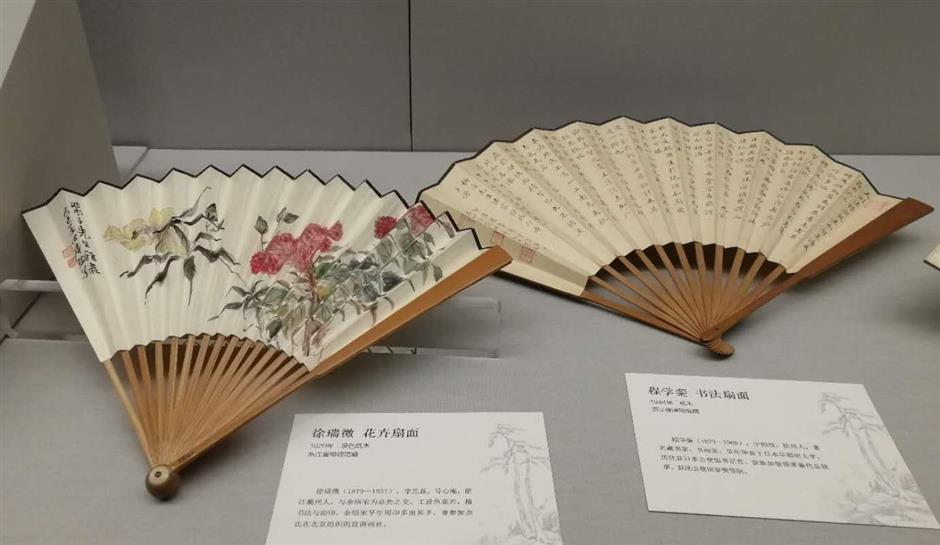Art show draws picture of literati society's past
An exhibition at the Zhejiang Provincial Museum is showcasing some of the innovative artworks produced by the Donggao Literati’s Gathering.
The Donggao Literati’s Gathering is a Chinese painting and calligraphy society, which was established in Hangzhou 90 years ago.
The Chinese literati had a regular tradition of meeting up to read and write poems and verses, to paint, to drink and to appreciate art with like-minded people.
One of the earliest, and also the most renowned gatherings, dates back to AD 353, when Wang Xizhi, the outstanding calligrapher, wrote down his most famous piece during a meeting at Lanting near Shaoxing City in Zhejiang Province.
Donggao Literati’s Gathering however, was founded at a time when many were gradually abandoning this tradition and embraced a new lifestyle under the influence of Western culture and aesthetics.
Most of the members were distinguished people of the time, painters, calligraphers, bankers, educators and former government officials. They are what we call today the scholar-bureaucrats of China where art literacy was part of their self-cultivation.

Fan paintings displayed at the exhibition in Zhejiang Provincial Museum
The founder of the organization Yu Shaosong for example, graduated from Hosei University in Japan and was once the House of Representatives’ secretary in the first modern government after the fall of the Qing Dynasty (1644-1911).
When he resigned and came back to Hangzhou in 1928, Yu started to get acquainted with the local gentry and a group of artists because he wanted to have a fixed location to meet with these people.
The first gathering took place in October that year in Gaoyuan Garden, north of the Qingtai Gate, along the Tiesha River of Hangzhou. The name of the gathering “Donggao” (east of Gaoyuan Garden) was also taken from that.
At its peak, there were 40 or so members participating in the weekly gathering held at Gaoyuan Garden. There would also be a meal party every two weeks. Members took their recent works to be appreciated by their peers, sometimes a poem was written on the site to reciprocate it.
Extra celebrations were made on Double Third Festival, Huazhao Festival, Mid-Autumn Festival and birthdays of certain ancient Chinese poets, such as Bai Juyi and Su Shi.

Scroll painting of Amitayus Buddha by Zheng Yisun
The works included scroll paintings of landscape and flowers, fan paintings and calligraphy of various styles. Sometimes they collaborated on a certain painting or made a collection of small-sized sketches featuring different artists.
Visitors can also find artworks of those who have been closely related to Hangzhou and to the modern history of China.
Ma Yifu, a great thinker of Confucius theories, who taught briefly at the Zhejiang University, wrote the university’s anthem. Ma Xulun was born in Hangzhou and later became the nation’s first Minister of Education.
Regrettably, there are no traces of Gaoyuan Garden left now. But the art left by these former elites of society allows us to get a snapshot of how they have lived and a history that has been forgotten by many.
Date: Through May 13 (closed on Mondays)
Address: E Zone, No. 29, West Lake Cultural Square
Admission: Free
















